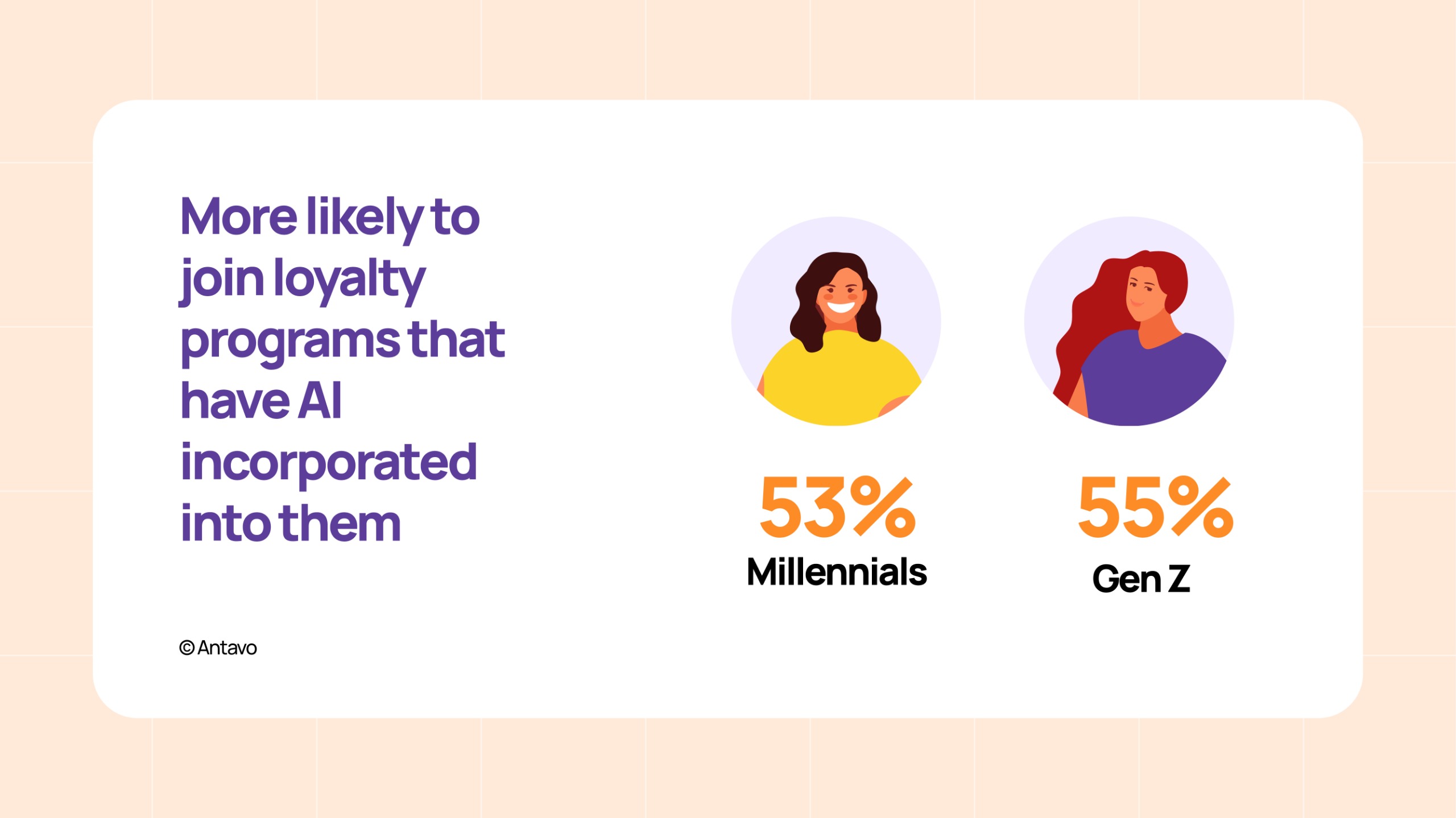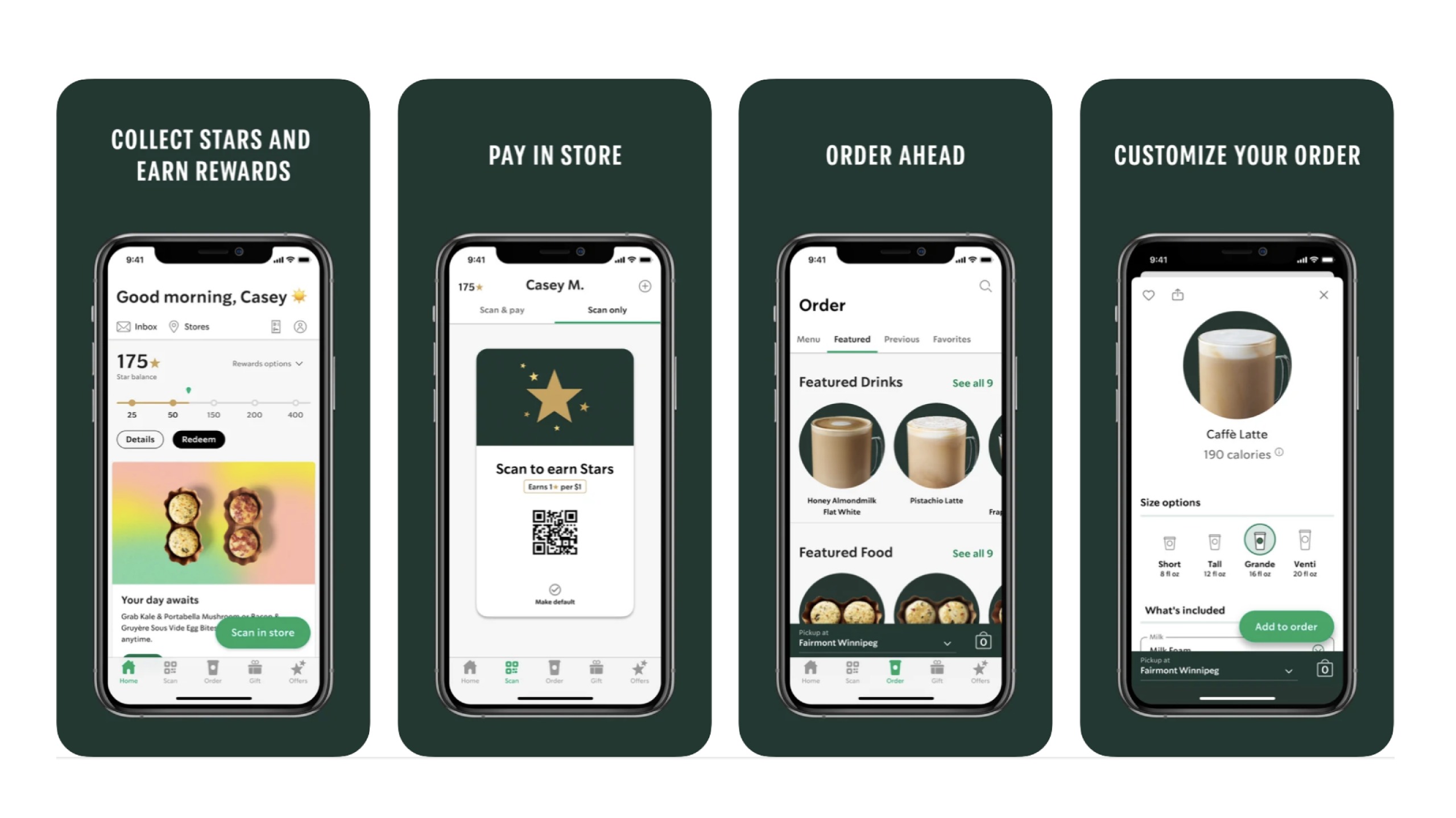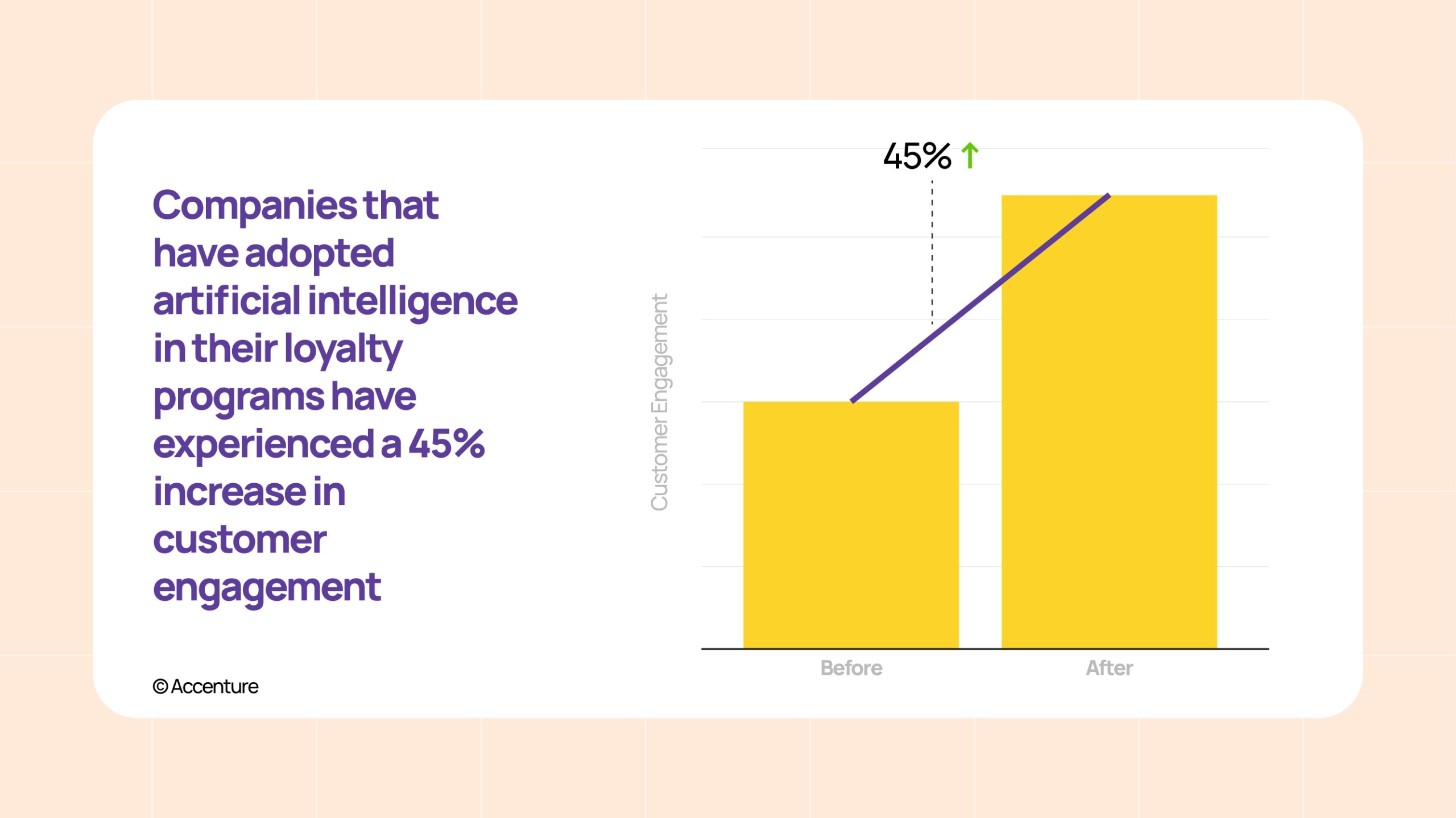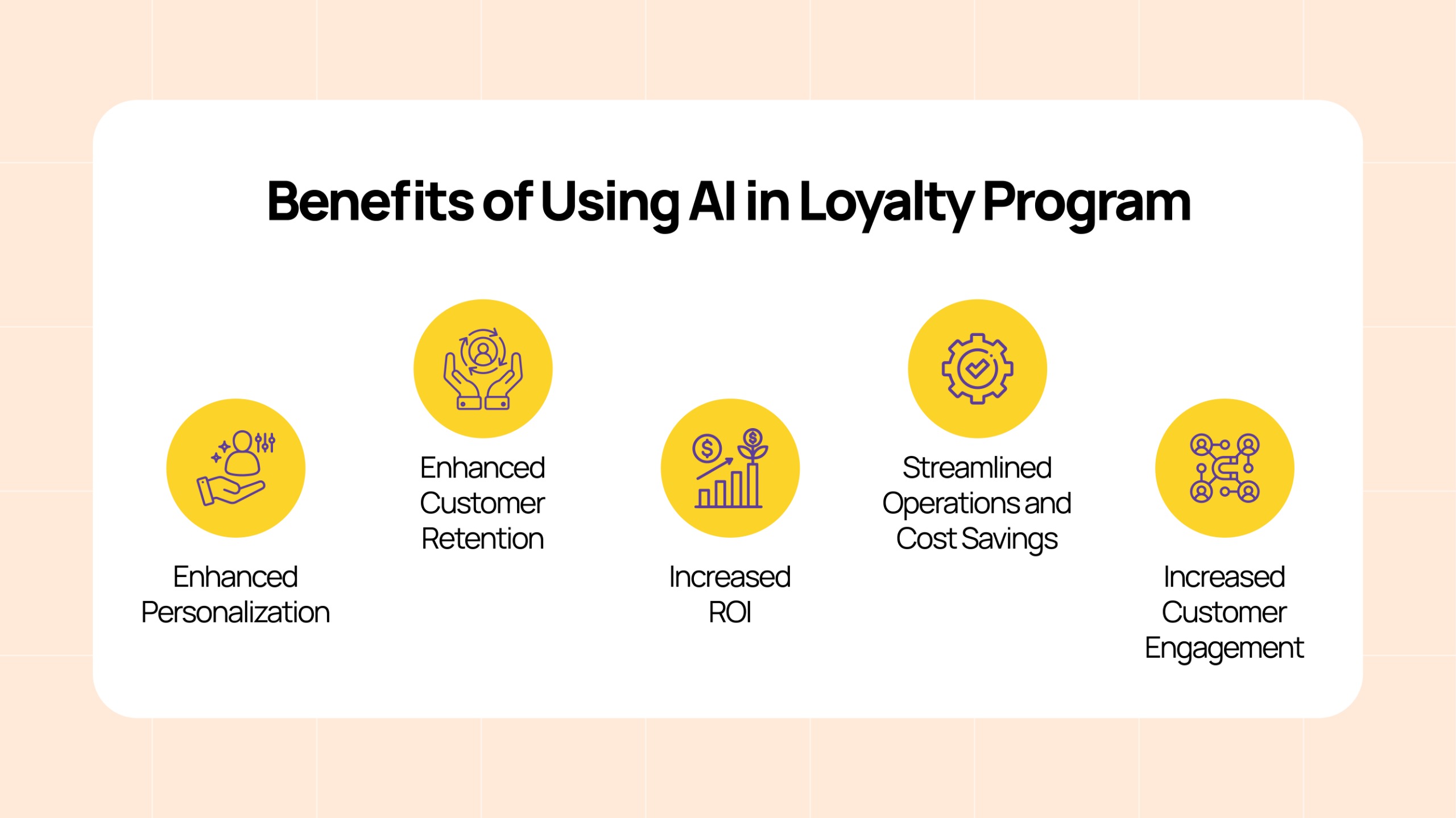
In previous blogs, we have seen how loyalty programs have evolved from copper coins, and punch cards to a highly sophisticated system that was designed to drive customer engagement and retention. Customer expectations are consistently rising and the competition to gain customers is intense. So the real question is not ‘What is next for loyalty?’. Instead, the question is ‘How can AI accelerate your loyalty program ideas into long-term customer relationships?’
Limitations of Traditional Loyalty Programs

A loyalty program is important for businesses to retain customers and drive repeat purchases. But with the rise in the trend of hyper-personalization and enhanced consumer experience, the traditional scape of loyalty programs has started to show their age. Some of the key limitations of traditional loyalty programs include:
- Limited Data Utilization
Traditional programs are often built on a basic level of data. This limited data utilization stagnates a brand’s ability to understand individual customers and they fail in targeting and providing personalized offers. In these cases, metrics like customer behavior, preferences, sentiments, and more often go untracked, making it difficult to understand what drives loyalty and customer engagement. Without advanced analytics tools, it can be said that loyalty programs are stuck in the dark.
- Static Reward Systems
One of the biggest drawbacks of traditional loyalty programs is the static nature of their reward systems. For instance, customers accumulate points depending on their purchases, but brands do not provide them based on customer behavior or lifecycle stages.
For example, a loyal customer who buys frequently might be treated the same as a one-time shopper, resulting in missed opportunities to deepen customer relationships.
- Inefficiency in Managing Rewards
Traditional loyalty programs are manual. This means managing customer rewards and benefits can be difficult and hold a place for errors. Businesses also struggle with offering the right rewards at the right time, resulting in inefficient and frustrating customer experience. Additionally, traditional systems may not provide the agility needed to adjust or personalize rewards in real time, further distancing businesses from customer expectations.
How AI revolutionizes Loyalty Program?
The business industry is highly competitive wherein the ‘points for purchase’ kind of loyalty program is becoming highly obsolete because all customers are treated equivalently irrespective of their spending habits and visit frequency. Artificial Intelligence, on the other hand, is turning these outdated systems into sophisticated and personalized engagement platforms that add value to businesses and customers.

According to the global customer loyalty report of Antavo, 55% of Gen Z and 53% of Millennials are more likely to join loyalty programs that have AI incorporated into them.
- Personalization
The latest data from Forbes states that customers are 8x more satisfied with the loyalty program if it feels personalized to them.
Modern-day AI has the algorithms to analyze vast amounts of customer data like purchase history, browsing behavior, social media interaction, and even location data to create a detailed customer persona. This feature allows businesses to provide tailored rewards that customers need whether it is recommending a perfect product or providing tailored discounts.

Starbucks has incorporated AI in its Starbucks Rewards Program intending to provide highly personalized experiences to its customers. Following its feature, it analyzes purchase history and preferences to recommend drinks, promotions, and rewards tailored to individual customers. The mobile app, on the other hand, integrates machine learning algorithms, which suggest beverages based on past orders and local trends. AI also optimizes the timing of rewards and personalized offers, sending promotions when customers are most likely to redeem them.
- Segmentation
AI with Machine Learning algorithms can analyze customer behavior in real-time which helps in creating a dynamic and granular customer segmentation. This segmentation pattern is based on purchase history, engagement levels, brand affinity, and even social media activity. Thus, allowing businesses to target each group with the right message, rewards, or promotions at the right time.
- Predictive Analytics
53% of Marketing leaders use or plan to use the Predictive Analytics feature of AI to gain customer insights (Forrester)
AI’s predictive capabilities are revolutionizing how businesses engage with loyalty program members. It can analyze historical and real-time data of customer behavior to predict:
- When a customer is likely to make their next purchase
- Which products they might be interested in
- When they’re at risk of churning
- What type of rewards would most effectively drive engagement
This allows businesses to proactively engage customers with relevant offers before they even consider switching to competitors.
For instance, Amazon uses predictive analytics to anticipate the products that their customers might buy next and pushes relevant deals or discounts depending on those insights.
- Automated Reward Optimization
According to a Deloitte survey, 43% of executives invest in hybrid customer experiences to increase personalization and optimize their offerings.
AI systems can continuously optimize reward structures in real time depending on customer behavior, business goals, and market conditions. Through machine learning, these systems can:
- Adjust reward values based on inventory levels
- Modify point-earning opportunities during slow periods
- Create special promotions for specific customer segments
- Balance program costs with customer satisfaction
This approach makes sure that loyalty programs remain profitable for businesses while also maintaining their appeal to customers.
- Enhanced Customer Experiences
According to the latest stats of Accenture, companies that have adopted artificial intelligence in their loyalty programs have experienced a 45% increase in customer engagement.

Loyalty programs today are incorporating AI-powered interfaces. This integration makes program interaction more intuitive and engaging. For instance,
- Chatbots provide instant 24/7 support for program-related queries
- Voice assistants enable hands-free point checking and reward redemption
- Computer vision technology allows for seamless receipt scanning and point collection
- Natural Language Processing helps customers understand program benefits and rules more easily
- Fraud Detection & Prevention
According to a McKinsey study, AI can reduce the cost of Fraud detection by 30%.
AI significantly improves the security of loyalty programs by detecting and preventing fraudulent activities. Machine learning algorithms can identify suspicious patterns in real-time, such as:
- Unusual point-earning behavior
- Multiple accounts linked to the same user
- Suspicious redemption patterns
- Potential point trafficking
This protection ensures the program’s integrity and maintains its value for legitimate members.
Benefits of Using AI in Loyalty Program

- Enhanced Personalization
AI helps businesses by offering hyper-personalized rewards and recommendations that are tailored to each individual’s preferences, behavior, and purchase history. It can predict what products, services, or rewards a customer is most likely to appreciate, which in turn, helps in building a deeper emotional connection between the customer and the brand.
- Enhanced Customer Retention
AI-driven loyalty programs are designed to proactively engage customers and also reduce the likelihood of churn. With predictive analytics, it can identify when a customer is likely to stop engaging with the brand. Based on these insights, AI can automatically trigger personalized re-engagement campaigns which will help the brand win back the customer’s attention.
- Increased ROI
Loyalty Programs can be optimized by the integration of AI. It helps by improving reward targeting, offering customers rewards they are more likely to value, and reducing unnecessary spending on irrelevant incentives. AI allows businesses to segment customers in a highly specific manner, making sure that the right offer goes to the right person at the right time. This not only improves the effectiveness of the rewards but also ensures a better return on investment (ROI) for the loyalty program.
4. Streamlined Operations and Cost Savings
Automation in Loyalty Program management helps in customer segmentation, reward distribution, and campaign management. It helps businesses save significant time and resources. AI-powered systems automatically process loyalty points, update rewards and tiers in real time, and adjust campaigns based on customer behavior. Thus, automation reduces the need for manual intervention which streamlines operations and drives efficiency across the program.
5. Increased Customer Engagement
AI-powered loyalty programs are more engaging than traditional ones. This is because they offer real-time interactions, personalized content, and incentives depending on the customer behavior. AI in loyalty programs keeps the customer engaged through personalized notifications, mobile app features, or targeted email campaigns. This leads to more frequent customer interactions with the brand, increasing the chances of repeat business and enhancing customer lifetime value.
Conclusion
Traditional Loyalty Programs were highly effective in the past but they CANNOT meet the requirements of the data-driven and highly personalized data. As customer expectations continue to evolve, the need for businesses to stay ahead of the curve has never been more pressing.
By embracing AI, businesses can build loyalty programs that are smarter, more efficient, and better aligned with customer preferences. AI-powered personalization ensures that every interaction is meaningful, while predictive analytics help companies stay one step ahead of their customers’ needs.
It’s time to embrace AI, unlock the full potential of your loyalty program, and create experiences that truly resonate with your customers. The future of loyalty is here, and it’s powered by AI.
